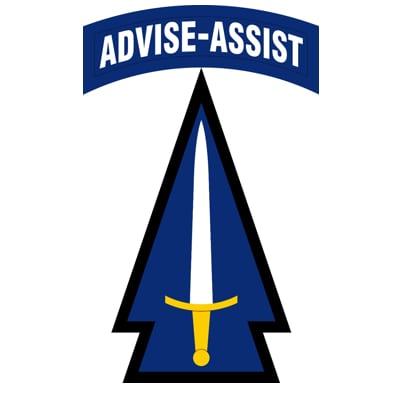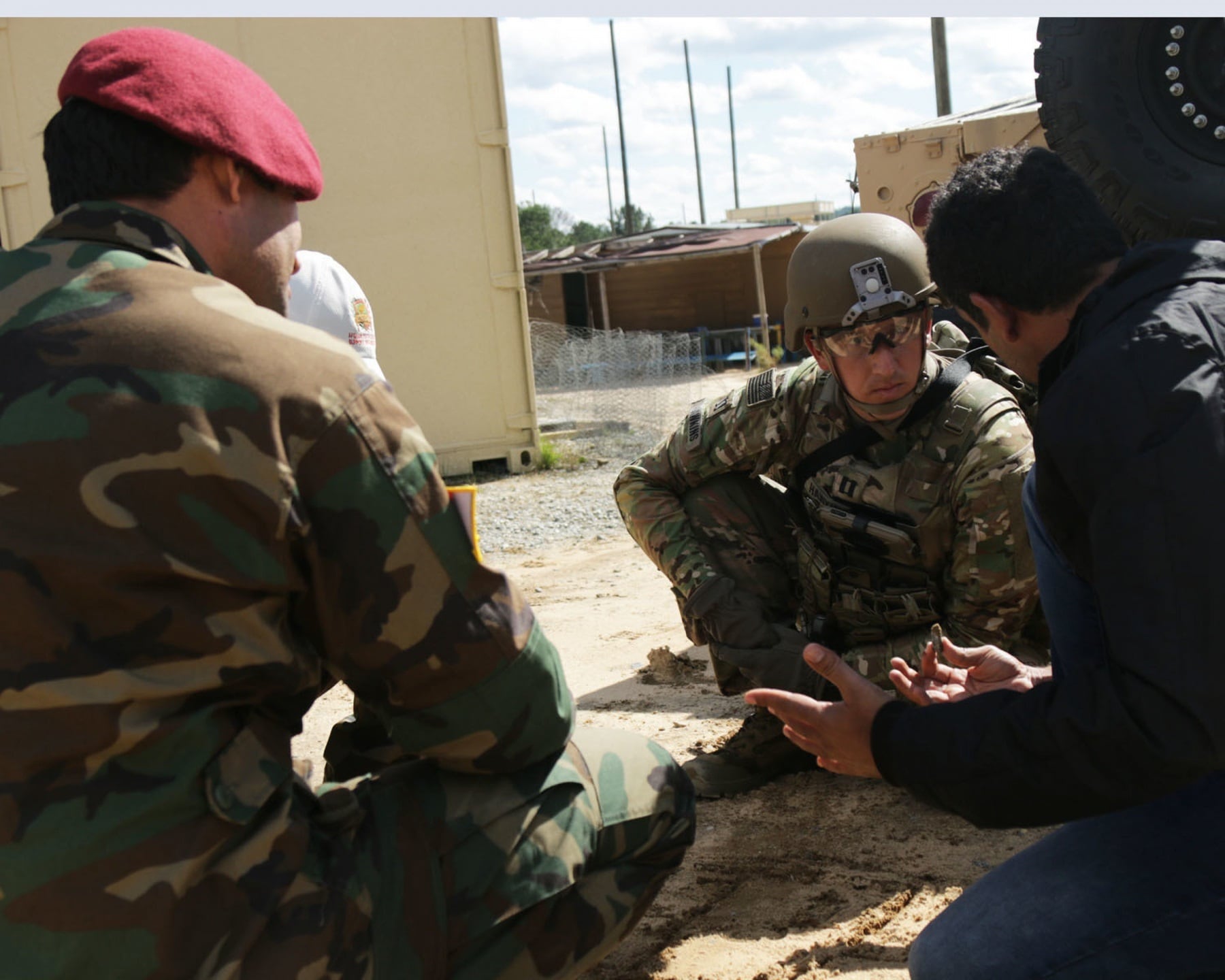Editor’s note: In this story, Army Chief of Staff Gen. Mark Milley stated that Special Forces had never trained conventional Afghan or Iraqi troops. Milley later clarified to Army Times that, in some cases, they had, but that both nations’ conventional forces had predominantly been trained by conventional U.S. troops.
As the Army’s first Security Force Assistance Brigade trains for its maiden deployment to Afghanistan next year, the brand new organization has also been grappling with backlash from leaked photos of a distinctive beret and Special Operations-reminiscent uniform patches.
There was never any intention to rip off Special Forces iconography, Army Chief of Staff Gen. Mark Milley — a Green Beret himself — told Army Times in a Monday phone interview.
“If people are angry at it — I own it, I’m the chief of staff of the Army,” he said. “I don’t want people taking their anger, wrath, questions, comments or anything out on the unit itself.”
After photos sent to Soldier Systems and posted to Instagram on Thursday went viral, active and former soldiers took to social media to decry the distinctive uniform items, including on the 1st SFAB’s official Facebook page.
Milley reached out to Army Times to clarify the reasons the Army chose the SFAB’s heraldry, and to explain, once again, what an SFAB does.
“Special Forces has gone out and done what they’re supposed to do, and only they can do, which is train irregular forces,” Milley said, citing as examples the work Green Berets have done with the Syrian Democratic Forces, local militias, indigenous special forces, Afghan commandos, Iraqi special forces and elite police SWAT teams.
“Special Forces does not train the Afghan National Army. They don’t train them now. They never have. Same thing in Iraq,” he added. “There’s a reason for that. One, that’s way beyond the capacity of Special Forces. It’s also beyond the skill set.”
SF teams don’t train infantry or armored brigades, Milley said. They also can’t teach artillery or helicopter flight operations. That’s where the SFAB comes in, with a brigade combat team chain-of-command and all of its mission sets.
“I don’t want all of this drama about berets and patches to take away from their mission,” Milley said. “I don’t like it when any elite force looks down their nose at anyone. Everybody has a unique role in the machine.”
The beret
Contrary to the photo circulating online, Milley said, the proposed military training adviser beret is not green — it’s more of an olive brown.
“The beret, the color of the beret, is based off of the British infantry beret,” he said.
That color was researched and chosen specifically because the SFAB’s mission is predominantly to train conventional infantry forces.
“It looked green,” Milley said of the prototype. “I looked at it, and I said, ‘I could see where someone would think it looks green.’”
But why even issue a distinctive beret at all? Because military training, advising and assisting has been an Army mission for 100 years, Milley said, but always on an ad hoc basis.
Think of the Korean Military Advisory Group or Military Assistance Command-Vietnam, he said, all the way through the training of the new Iraqi and Afghan national forces over the past two decades.
“If you want to attract volunteers for a mission that is arguably dangerous, then you probably need a few things out there to distinguish them,” Milley said.
The beret, and the uniform patches, are a recognition of the lineage of military training and advising, finally codified as a professional Army community, he added.
The tab
While Special Forces does have a tab, it denotes something very distinct — that the person wearing it completed a grueling selection and training process.
The Army has several tabs associated with a qualification school, like Sapper for combat engineers or Ranger school.
On the other hand, there are tabs that are simply associated with a unit and worn only when someone is assigned to one of those units, Milley said. Think airborne, which is distinct from the jump wings soldiers wear on their chests to denote having completed a qualification course.
The “combat advisor” tab seen in some Instagram posts is simply a unit tab, Milley said.
“Did anyone get excited about the 10th Mountain Division? That’s a unit tab. That’s not an individual skill tab,” he said. “If you go out here to the Old Guard, they have an Old Guard tab.“
The patch
The SFAB patch that’s been issued to members of the first brigade does look familiar. It’s a graphic arrowhead with a sword through it, that to many too closely resembles the rounded arrowhead and dagger motifs of Special Operations units.

That was not the intention, Milley said, and the Army Institute of Heraldry spent time making sure it didn’t crib from any other organizations.
“So, first of all, the sword that’s in the arrowhead — that is a direct lift from the MACV patch in Vietnam,” he said, as are the blue and white colors in the brigade flash.
There are many arrowhead patches in the Army, he added, and they took care to make sure this one was distinct.
“That arrowhead specifically was designed to indicate a couple of things,” Milley said. “The arrowhead is supposed to symbolize leadership and direction, and to convey conventional force offense, defense, and assistance of training partner toward those capabilities.”
The Legion
The “Legion” nickname started circulating recently, Milley said. The first SFAB specifically used it in a Facebook post, and commenters seized on the appropriation of 5th Special Forces Group‘s nickname.
Milley served in 5th Group.
“I started hearing the word ‘legion‘ a couple months ago, down there when I visited them,” he said. “I made the connection to the Roman Legion and the French Foreign Legion. I said, ’Guys, you’re not going to be called the Legion. Legion implies foreign fighters are in our unit, it implies mercenaries, it implies Roman imperialism.’ “
He directed the SFAB to drop the nickname, adding that 5th Group has “proprietary rights”on the term.
The Army is taking a second look at the beret color, Milley said, to make sure that the final version is obviously distinct from the forest green of the Special Forces beret.
“No one at all is trying to misappropriate Special Forces heraldry or Special Forces lineage, traditions or history,” Milley said. “I have too much respect personally for Special Forces. I love Special Forces. I’m a Green Beret, and I don’t want anybody misappropriating their heritage or their heraldry.“
He added that the Army, including himself, hadn’t done a good enough job explaining SFABs, the reasoning behind them, and his hope to turn them into a proud, professional Army organization with a lineage that will carry on for the long-term.
“If anyone’s angry, take their anger out on me, not them,” he said.
Meghann Myers is the Pentagon bureau chief at Military Times. She covers operations, policy, personnel, leadership and other issues affecting service members.




